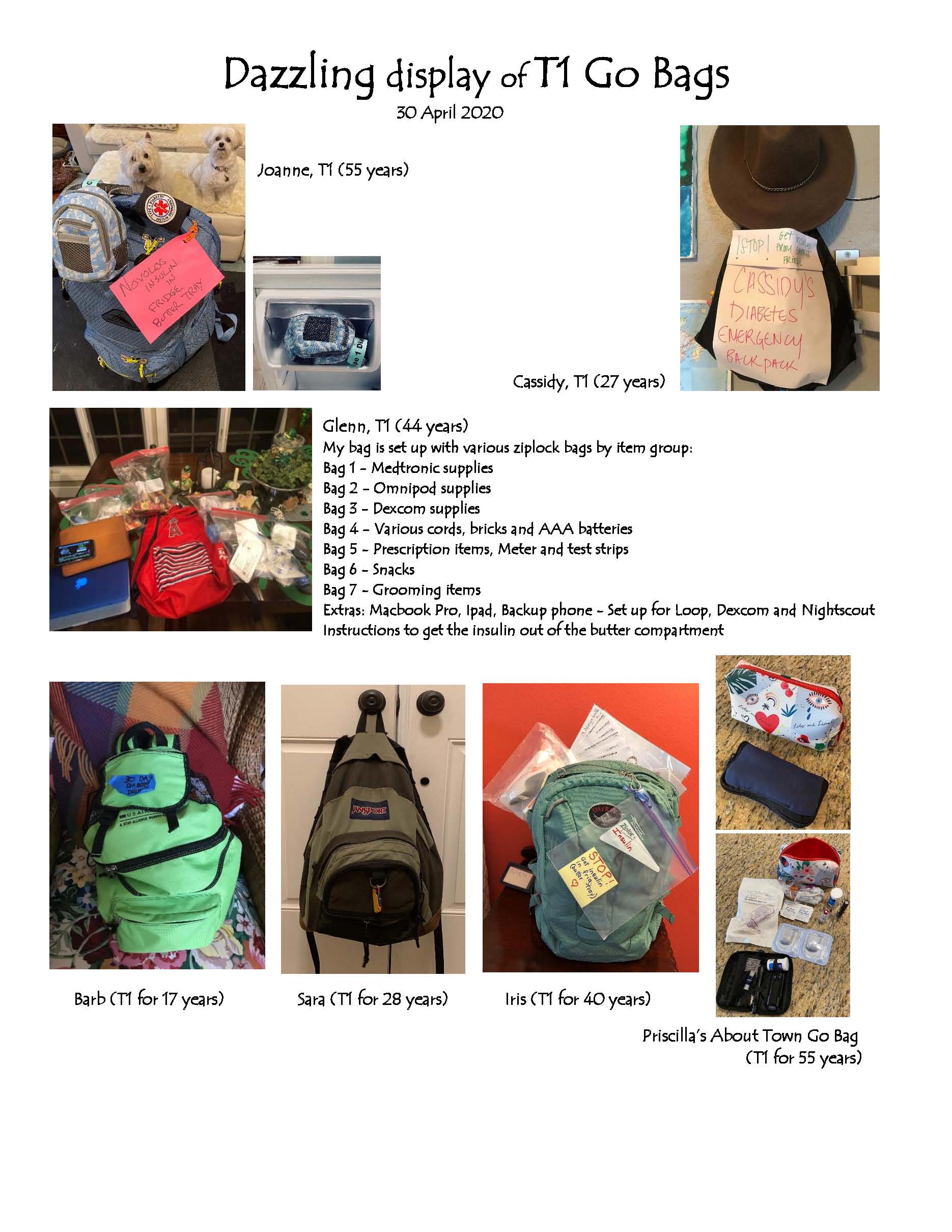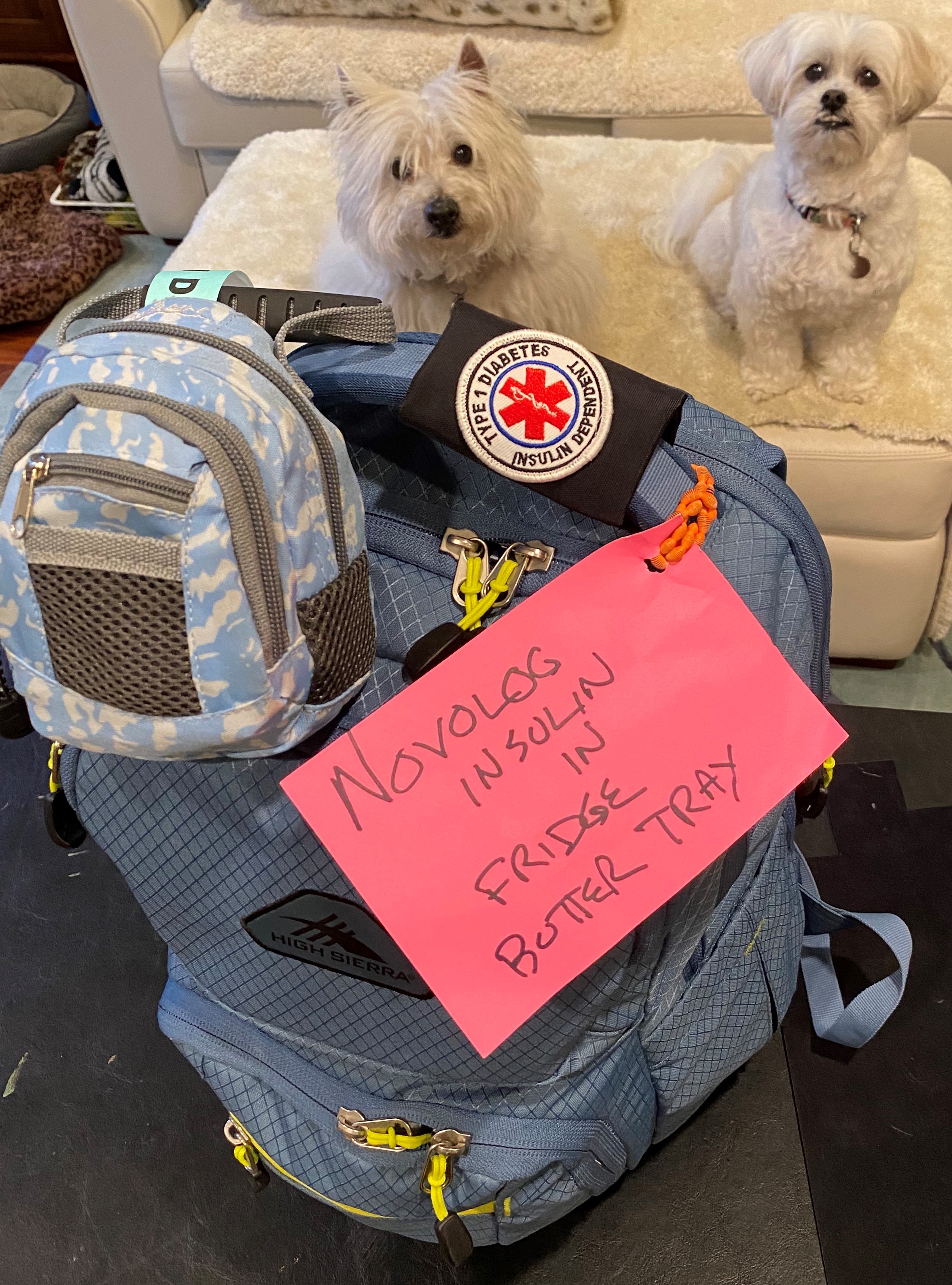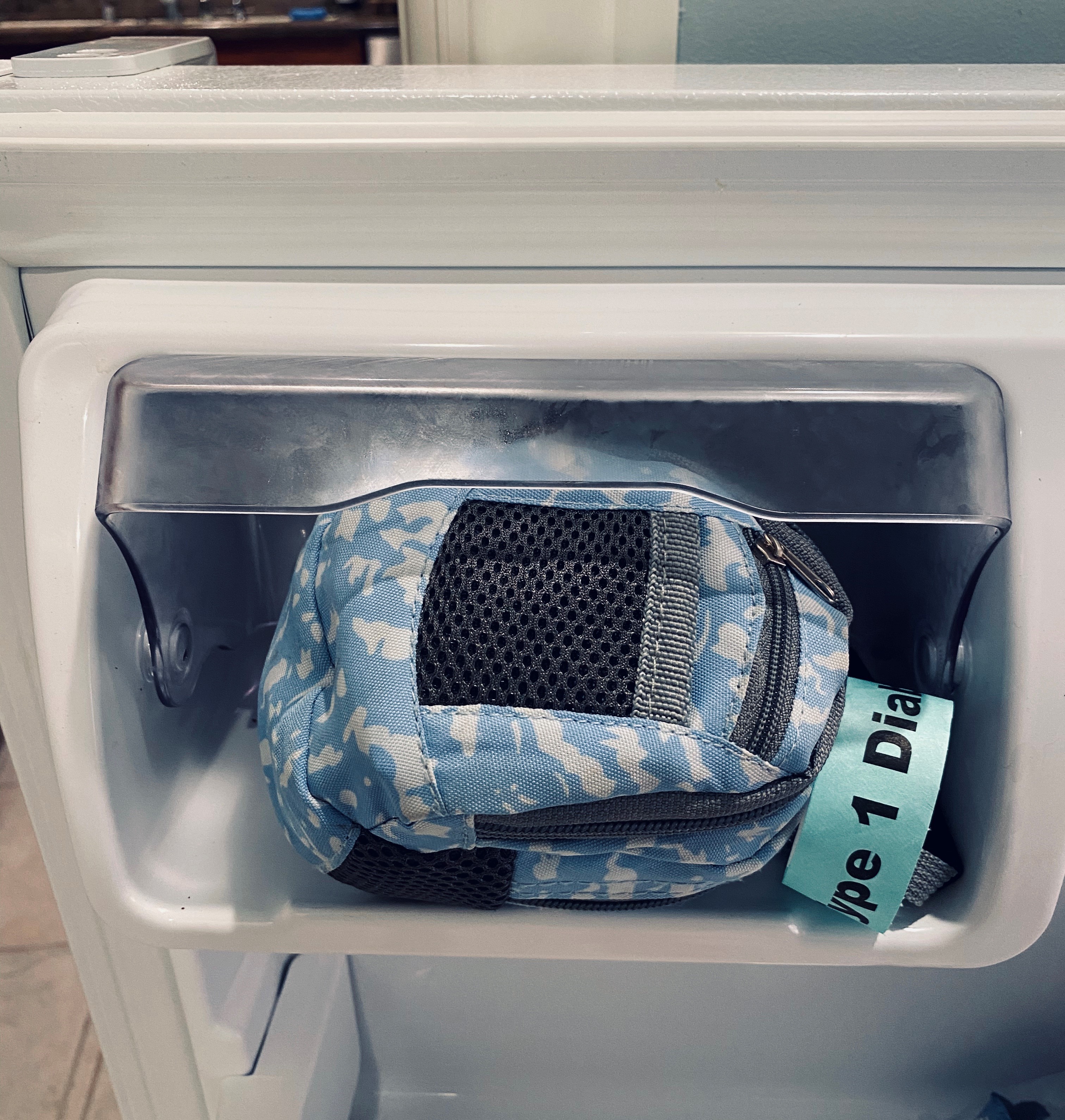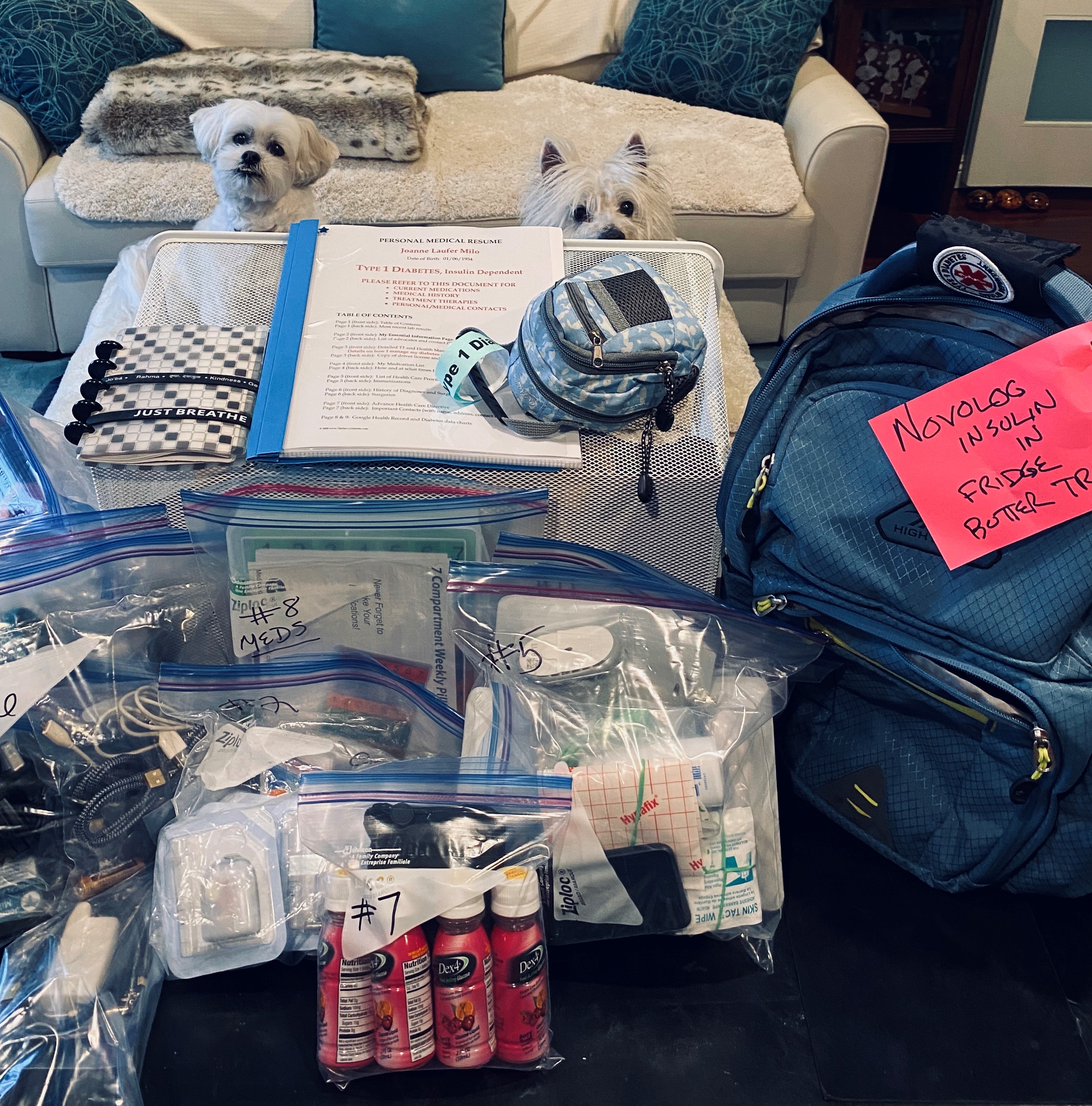Prepared [ pri-paird` ] adj.
- Properly expectant, organized, or equipped; ready. As in: “prepared for a hurricane”
- Done, made, written, etc., in advance
- Made earlier, previously, ahead of when needed
syn: ready, set, organized, arranged
You’ve come to the right place to begin your journey to becoming a Prepared T1D! Following my last post on being prepared for natural disasters and emergencies, I developed a few tools to help … which you can adapt for your own needs.
WHY Prepare for a Time when you are NOT ABLE TO BE IN CONTROL: BECAUSE you NEVER know!!!
- Natural disasters, accidents, emergencies … they can just happen.
- If you need to be hospitalized (not necessarily diabetes related), you could be cognitively impaired due to pain medications
- If you sustain an Injury (like broken arm) where you don’t have the dexterity to tend to your devices, you might need help.
There are LOTS of excuses to NOT get prepared.
-
- Isn’t that just asking for a problem? NO, being prepared keeps you more IN CONTROL and SAFER.
- I’ll get to it but I’m just too stressed now
- NOW is the smartest time to be prepared, as hospital staffs are under most strain
- With our tools, it’s not too difficult … kind of like following a recipe, just gather the ingredients and follow the directions
- It will take too much time
- You are already spending a lot of time managing your diabetes
- In an emergency situation, you want your care staff to come up to speed fast
- WHY IS IT SMART?
- First of all, IT IS COOL!!!
- You only have to do this once and then a monthly quick update
- Your doctors will be very impressed with and appreciative of your wisdom and readiness
Personal Medical Resume (All About Me!)
Let’s start with the Personal Medical Resume (All About ME!). This is IMPORTANT!
It speaks for you and has all your essential information in one place, gathered BEFORE an emergency. Here’s how to start and some suggestions of what to include … and remember, DO NOT GET OVERWHELMED! Just organize these items carefully and thoroughly … you only have to do this complete file ONCE!!!
- You might want to create a file on your computer where you keep all these documents … makes it much easier when you need to update information. It’s all in one place
- I put each page, back to back, into sheet protectors, figured out the order that I thought might be valuable … and put them in a clasp folder.
- These documents are included in this post, are set up as generic … you must fill in your own personal information.
- It should include the items below (more or less, depending on your needs). I’ve suggested how you might want to organize these pages but you choose what to include and in what order.
Here’s what to include:
- Personal contact info (address, phone, medical insurance)
- TYPE 1 DIABETES wristband and accompanying One Sheet of your medical conditions, treatments and settings
- All medical conditions
- How T1 is managed (pump/shots, CGM/BG meter, dosing/settings)
- Personal and medical contacts (spouse, T1 advocates, medical professionals)
- List of current medications, along with how/when these are taken
- List of allergies
- List of surgeries
- List of immunizations
- Complete medical history (T1, other conditions, surgeries) in chronological order
- Advance Health Care Directive
- Possibly the latest Dexcom Clarity printout, if using Dexcom CGM
I’ve included several top-level PDF documents which you can use. If you’d prefer the editable Word-formated documents, please send me a note at joanne@TheSavvyDiabetic.com and I’ll email you all of the editable forms.
The GO BAG
Sometimes, stuff happens. You could get appendicitis (it happened to me, on the other side of the country) … or you might break a leg … and end up in the hospital. You don’t plan those things, but stuff happens. And if you do end up in the hospital, how can you make sure you are as safe as possible while in the hands of hospital care? OR … on a happy note, the love of your life could call you up and say, get your stuff ready, we’re leaving for Fiji this afternoon … and you will WANT to be ready, right?!?!?
- Go Bag, which includes:
- Medical stuff
- Medical device supplies
- Pump reservoirs and infusion sets, pods, alcohol swabs, IV prep or other adhesives)
- CGM sensors, possibly a spare transmitter, alcohol swabs, prep adhesives, receiver with name tag)
- BG meter, full and unexpired vial of strips, lancing device with lancets)
- Syringes, in case you need to take a shot of insulin
- Back up medical devices (pump, PDM if using DIY Loop, all with ID … I use Bubble Name Tags)
- Charging cables, USB plugs, Power bank, batteries
- Pill case with 1-2 weeks of prescription medication, which is to be swapped out every month
- Glucose or fast source of sugar (don’t want to wait for hospital staff to bring you juice)
- Medical device supplies
- Refrigerated Tiny Go Bag
- with fresh vial of insulin
- Afrezza (if used)
- rescue glucagon/Basqimi
- Label on Go Bag indicates that Tiny Go Bag is in Butter Compartment in Refrigerator
- Personal Items
- Toiletries and personal necessities, such as toothbrush and paste, nail file, deodorant or baby powder, reading glasses
- Clothing: 1 week’s worth of underwear, T-shirt, shorts/sweats, slippers
- Medical stuff
So what does it look like, while you are organizing it and when it’s ready to go?






Oh, I am so with you!! If we have learned anything in these past 24 months, it is that whatever we think cant happen, will.
But I already knew that. I mean, hey, Sheryl turned me down for a date three times. Yeah, like my boy scout days, be prepared.